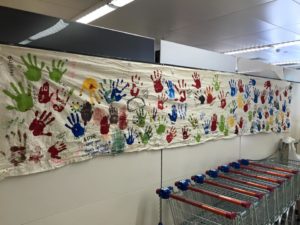Written by River Rosalind
You don’t have to look at a calendar to see it’s October. Stores are filled with Halloween attire and memorabilia, cafes are attempting to pour yet another ridiculous concoction of pumpkin infused whatever down our throats, and the weather – well honestly I have no idea what’s going on with the weather right now. But we get it, Autumn is upon us. For the majority of people we associate this month with holidays such as Halloween, health observances such as Mental Illness Awareness Week, and for myself and the rest of the 3.5% of the population that identify as black in the U.K, it’s also Black History Month(BHM).
Now for those of you reading this who don’t really know about Black History Month and what it stands for, please, allow me to drop some knowledge onto that beautiful head of yours. The origins of Black History Month can be traced to decorated academic and historian Carter G. Woodson. Woodson founded the event in order to promote, preserve, and encourage the education of black history in public schools across the United States. Originally named Negro History Week, it was and still is celebrated in the U.S during the month of February in homage to both the birthdays of Fredrick Douglass (an African-American abolitionist, author, and statesman) and Abraham Lincoln (the sixteenth president of the U.S whose Emancipation Proclamation led to the ultimate outlaw of slavery in 1865.)
Woodson was convinced that the education of black history was a crucial necessity in order to ensure both the intellectual and physical survival of the black people, whose contributions to society thus far were either completely ignored or white-washed. Negro History Week became Black History month in 1969 when it was put forward by the Black United Students of Kent State University. It was formally recognised by the U.S government in 1976 when Gerald Ford urged Americans to “seize the opportunity to honour the too-often neglected accomplishments of black Americans in every area of endeavour through our history.” BHM was first celebrated in London in 1987, organised by Ghanaian analyst Akyaaba Addai-Sebo who served as a coordinator of special projects for the Greater London Council.
How does it feel to be a bit more culturally enlightened now? It’s a great feeling, right? YOU’RE WELCOME.
BHM has its controversies, with both black and white communities debating whether it is necessary or fair. In this writer’s opinion, BHM is an unfortunate necessity. It’s unfortunate because in my ideal, Utopian society I’d love to think that we as humans could accept and acknowledge the contribution of all races. Not black history, not white history, not asian history etc. – just human history. However, BHM is a necessity considering the still apparent effects of years of systematic racism and white-washing stemming from slavery. We still have to go out of our way to promote, acknowledge, and celebrate our past and culture.
Woodson’s primary intention was to promote and include the education of black history outside of just slavery in academic curriculum. So it saddens me to think that we still haven’t achieved that goal. The majority of education regarding black history still revolves around the premise of slavery and has not yet evolved to the point where students of all cultures can recognise the contributions of blacks as academics, scientists, politicians, authors, artists, inventors etc. Until this happens, a mechanism such as Black History Month is essential not only to understanding history as a whole, but crucial to the self-esteem and identity of young black youth of the world.
Stay tuned for more,
Much love,
River Rosalind

